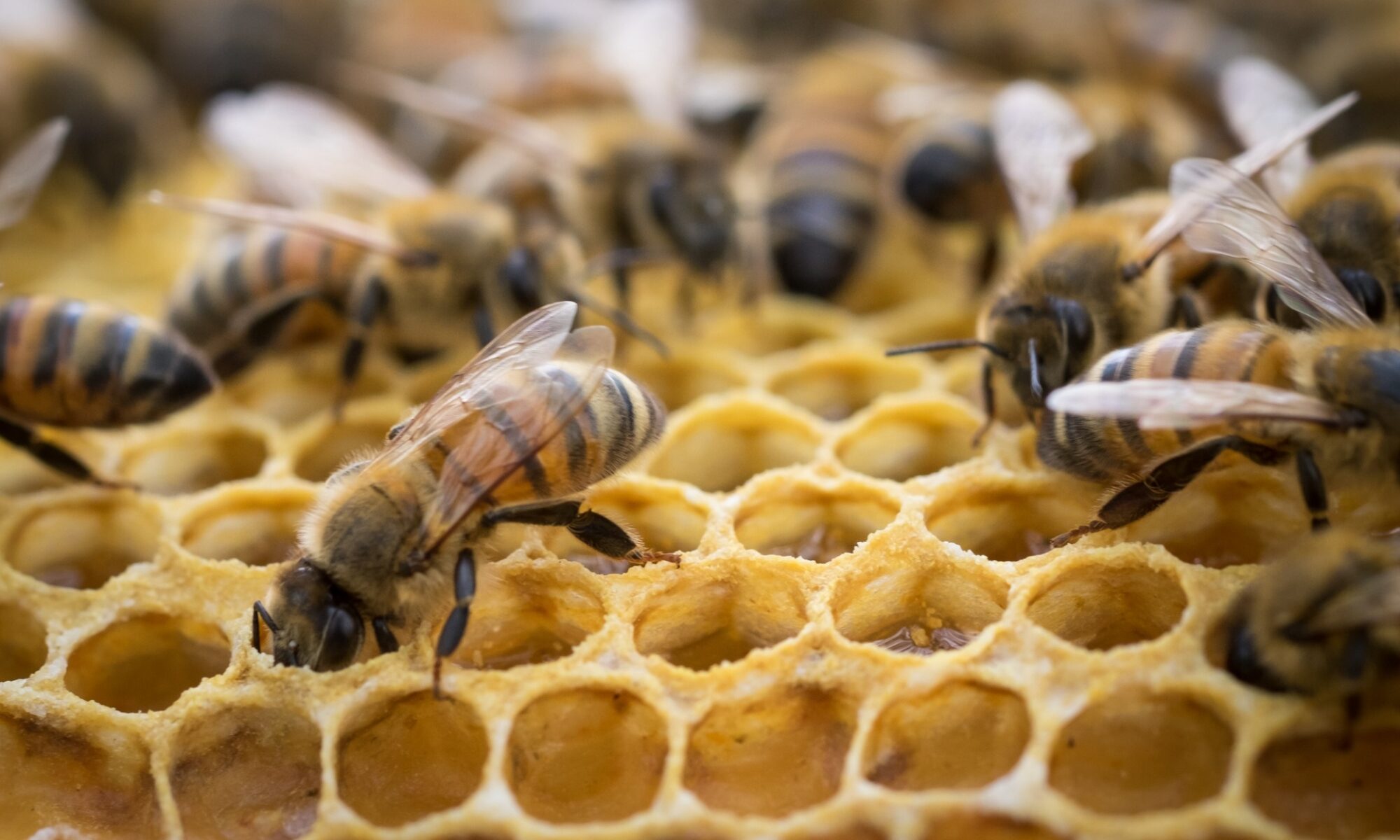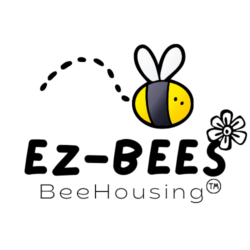Why would this hive help honeybees?
Beekeepers are trying to domesticate honey bees. They are using artificial breeding methods and creating dependence on ever increasing pesticides and chemicals. In Sweden, these efforts have extended to hunting down wild bee colonies. Here, some cities require that wild bees be exterminated. Some experts even suggest that there are NO wild bees left in America (though there is plenty of evidence to prove them wrong). There are several organizations trying to establish wild-honeybee habitat. We believe this very simple hive to be the easiest option to help the wild bees.
Why is this an easier way to house bees?
Modern beekeeping methods teach even backyard hobbyists to do weekly ‘inspections’ lift heavy boxes, use dangerous pesticides, kill new queen cells and buy new far-away bees when yours die. We’ve applied older, bee-friendly ideas from Fedor Lazutin, in his book, Keeping Bees With a Smile. Bees are attracted to small, cozy hives (more like hollow trees) and you are encouraged to leave them bee. If you want to check for extra honey, you only open your box, once or twice a year.
If I buy a hive, can I be sure local bees will move in?
Dr. Leo finds about a 50% success rate in his wooded area. If you often see honey bees on your flowers, it could be higher. Like putting up a birdhouse, patience is usually rewarded. Perhaps surprisingly, with mono-crop agriculture, there may be more wild bees available in urban areas, more pollen variety and fewer pesticides.
Is there likely to be any honey available after the bees get established?
Our hive is sized to allow room for a thriving brood chamber (the space where the queen lays eggs and baby bees hatch). Layens frames allow room for ‘survival honey’ on the brood frames. There is also room for a few frames of surplus honey. It is actually healthier to remove the surplus honey frames, the bees will not use it, it can attract pests and they would have to heat it in winter. Remember, which ever you choose, wild bees survive untended.
Is this hive like the ‘bee houses’ sold at garden centers?
No, Those are not for honey bees. They attract many other kinds of bees. They are inexpensive but may not be beneficial to the bees.
Is polystyrene safe for the bees?
Here is the answer from Keeping Bees With A Smile, p. 195ff. “Of course it is better to use natural materials for insulation, such as straw, moss, jute, etc., and it would be useful to experiment with various hive construction techniques based on those materials. It’s a question of priorities.: for me, the most important thing was to develop techniques for keeping bees on extra-deep frames and to begin working with the European dark bee (wild bees). Expanded polystyrene foam (EPS) is excellent insulation, so many beekeepers use it. Since the hive has an interior lining, the foam is unlikely to hurt in any way.”
The inside bee chamber is lined with plywood. In the Ez-Bees hives, we line the polystyrene with rough board to encourage the bees to propolize the hive. Propolis has anti-bacterial properties and will gradually coat the inside of the hive. Fedor Lazutin, in his book, Keeping Bees With a Smile, used polystyrene with a plywood interior. While Poly hives are popular in many parts of the world, including the North America, as far as we know, there are no Layens poly hives being made anywhere commercially in the world.
Are there other things the hives could be made of?
In the future, we plan to explore both recycled, natural and sustainable alternative materials. However, our most important priority is to restore bee habitat. Low cost well insulated small hives offer the best option for establishing thousands and even millions of local bee houses.
What is special about Layens hives?
The inventor of the modern commercial hives wrote, “The perfect way to control your bees.” Georges de Layens, on the other hand, studied bees in their natural wild setting and designed his hive to be what bees liked. His hives are popular because they insure that bees have enough space not only for brood but also for survival honey – on the same frame. The bees must keep the brood warm and also consume their stored honey. This makes it easy for them – and also easy to tell where their ‘extra’ honey is available. 
This is a crucial element which makes Layens hives suited for Keeping Bees With A Smile methods. Here is a comparison by a beekeeper with 15+ years of experience.
What happens when the small hive gets too crowded?
There are several options. First, the bees can be allowed to swarm, it is the natural way for bees to expand. Some beekeepers extra empty hives nearby for swarms to move into. Some urban beekeepers are very concerned about producing swarms since they may end up in unwanted places like siding or garages. Second, you can attempt to regularly check your hive and try to prevent the bees from swarming (the modern way). Third, we are recommending using the Taranov swarm method – named after a Russian beekeeper. It offers a healthy way to expand your hives similar to the natural swarming.
My town limits or opposes beekeeping, what can I do?
We recommend talking with your local officials. There may be locations nearby which would allow you to place hives. Most importantly, if you put out Ez-Bees houses, you are providing habitat for bees already in your neighborhood. You may be preventing bees from choosing troublesome locations, in houses, sheds, garages, old barrels or even abandoned toilet tanks (yes, true). The low-maintenance methods presented in Keeping Bees With A Smile are not even considered beekeeping by modern commercial standards. We are literally just providing homes for neighborhood bees.
My city has beekeeping ordinances, could I still do this?
Strictly speaking this is not ‘beekeeping’. You are attracting bees already living in your city. They WILL make their home in sheds, siding or other problem spaces. You are not keeping them, they are not ‘yours’ in a real way. You are just providing a house, saving them from being treated as a nuisance, exterminated rather than a rich educational resource. If you have extremely small space (we’ve been contacted by people with a hive on balconies 12 and 14 floors above the city – See our Urban Beekeeping page – those people talk with their neighbors about it, show them the bees and usually give them honey gifts.
Are you experts?
No, we’ve been interested in bees but afraid of the expense and trouble of commercial style modern beekeeping. We are newbies (like you) who are working on helping bees while communicating with experts and local beekeepers and sticking with well proven methods and materials.

